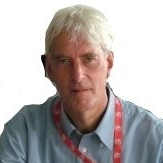Tri-Generation Cycles, Combined Heat, Power and Cooling (CHPC)
A special issue of Energies (ISSN 1996-1073).
Deadline for manuscript submissions: closed (31 May 2015) | Viewed by 31139
Special Issue Editor
Interests: thermal power systems; refrigeration; combined cycles; internal combustion engines; finite time thermodynamics
Special Issues, Collections and Topics in MDPI journals
Special Issue Information
Dear Colleagues,
The thermodynamic community has been engaged for the past 20 years or so in improving the efficiency of thermal systems so as to meet the challenge of reducing greenhouse gas emissions. The concept of CHP is well developed, particularly for large scale operation, but the focus is now shifting to low scale tri-generation cycles for district or community use. Ingenious arrangements of combined cycles have been proposed to make use of the waste heat from the initial cycle to improve the overall efficiency (entropy generation minimization) and to produce fresh water from desalination plants, or to feed pottery kilns or LNG gasification plants (to name but a few). Also, new thermodynamic cycles, such as the COOLCEP-S, Kalina, MATIANT, Brayson, and Goswami have been proposed. Several ORC-based systems using solar power combined with geothermal energy have been analyzed and suitable working fluids have been identified. However, it is notable the Energy Utilization Factor of several real
tri-generation installations is less than that obtained from CHP systems. We are still at the early stage of development of tri-generation cycles. Thus, it is likely that performance will improve through theoretical analysis and the development of new and imaginative systems.
This Special Issue focuses on new developments in tri-generation systems for the purposes of improved thermal efficiency, energy utilization, and minimal environmental impact.
Prof. Dr. Brian Agnew
Guest Editor
Manuscript Submission Information
Manuscripts should be submitted online at www.mdpi.com by registering and logging in to this website. Once you are registered, click here to go to the submission form. Manuscripts can be submitted until the deadline. All submissions that pass pre-check are peer-reviewed. Accepted papers will be published continuously in the journal (as soon as accepted) and will be listed together on the special issue website. Research articles, review articles as well as short communications are invited. For planned papers, a title and short abstract (about 100 words) can be sent to the Editorial Office for announcement on this website.
Submitted manuscripts should not have been published previously, nor be under consideration for publication elsewhere (except conference proceedings papers). All manuscripts are thoroughly refereed through a single-blind peer-review process. A guide for authors and other relevant information for submission of manuscripts is available on the Instructions for Authors page. Energies is an international peer-reviewed open access semimonthly journal published by MDPI.
Please visit the Instructions for Authors page before submitting a manuscript. The Article Processing Charge (APC) for publication in this open access journal is 2600 CHF (Swiss Francs). Submitted papers should be well formatted and use good English. Authors may use MDPI's English editing service prior to publication or during author revisions.
Keywords
- Exergy Analysis
- Trigeneration
- Combined Cycles
- LNG Processing
- Heat Driven Cycles





